Your Ultimate Guide to Visiting Huangcangyu National Forest Park: Nature at Its Best
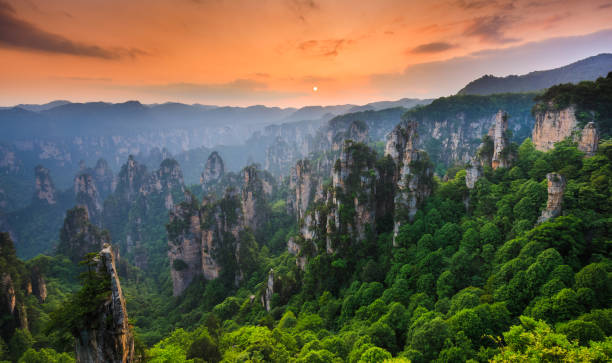
An Essential Guide to Visiting Huangcangyu National Forest Park
Nestled in the scenic beauty of Anhui Province, Huangcangyu National Forest Park, also known as Imperial Treasure Valley, invites adventurers and nature lovers alike to explore its breathtaking landscapes and rich history. Just a short journey from the bustling city of Suzhou, this hidden gem boasts towering ancient trees, crystal-clear springs, and a myriad of unique rock formations, all waiting to be discovered.
With its diverse range of attractions, including the mystical Huangcang Cave and serene Bajian Spring, the park offers an escape into nature that feels both tranquil and invigorating. The lush greenery and vibrant seasonal colors create a picturesque backdrop for hiking, photography, or simply soaking in the serene atmosphere.
Legend has it that this enchanting valley served as a refuge for Emperor Gaozu of Han, adding an air of historical intrigue to your visit. As you explore the park’s scenic trails, you’ll encounter significant cultural landmarks like the Ruiyun and Tianmen Temples, each steeped in stories of the past.
Whether you’re an avid hiker, a family seeking a day of exploration, or a history buff eager to uncover tales of ancient emperors, Huangcangyu National Forest Park promises a memorable experience that will captivate your senses and leave you yearning for more. Prepare to immerse yourself in the natural beauty and cultural richness of this extraordinary destination!
In This Guide
- An Essential Guide to Visiting Huangcangyu National Forest Park
- The Rich History and Legends of Huangcangyu National Forest Park
- Main Highlights: What You Absolutely Can’t Miss
- Planning Your Visit: A Practical Guide
- Tickets: Prices, Booking, and Tips
- How to Get There: A Complete Transportation Guide
- Local Cuisine and Accommodation Nearby
- Frequently Asked Questions
- Final Thoughts on Your Trip
The Rich History and Legends of Huangcangyu National Forest Park
Nestled in the picturesque Xiao County of Anhui Province, Huangcangyu National Forest Park is not just a haven for nature lovers but also a treasure trove of history and legends that date back to ancient times. Originally known as Huangsang Valley, named for the abundance of mulberry trees that flourished here, the park’s narrative is intricately woven with the fabric of Chinese history.
The park derives its current name, Huangcangyu, from a legendary tale involving Emperor Gaozu of Han, also known as Liu Bang. According to local lore, during his ascent to power, the emperor sought refuge in this very valley. It is said that he found solace among the towering trees and the tranquility of nature, leading to the valley being named Huangcangyu, which translates to “Imperial Treasure Valley.” This connection to a pivotal figure in Chinese history adds a layer of intrigue to the park, inviting visitors to walk in the footsteps of an emperor and ponder the events that unfolded in this serene landscape.
The park is rich with scenic spots that reflect its historical significance. Among them, the Ruiyun Temple and Tianmen Temple stand out, both steeped in cultural heritage and architectural beauty. The Shanmen Pailou, a grand three-story structure, serves as an impressive gateway to the park, capturing the artistic essence of the era in which it was built. Each element of this temple complex tells a story, echoing the spiritual and historical narratives that have unfolded over centuries.
As you wander through the park, you will encounter not only the natural beauty of dense forests and unique rock formations but also remnants of its storied past. The coveted Huangcang Cave, Sanxian Cave, and Bajian Spring are just a few of the many attractions that illustrate the park’s geological and historical richness. Visitors can explore these sites, each imbued with legends and the whispers of history, allowing for a deeper connection to the land.
Huangcangyu National Forest Park is a place where nature and history converge, offering an experience that transcends mere sightseeing. Each step through its verdant trails invites travelers to reflect upon the legends of old, making it a truly enchanting destination. Whether you are here to hike, meditate, or simply soak in the tranquility, the historical echoes of Huangcangyu will leave a lasting impression, ensuring that this park is not just a stop on your journey, but a memorable chapter in your travel story.
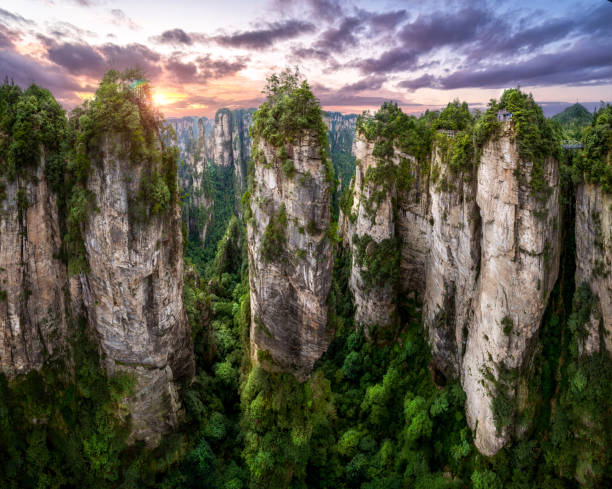
Huangcangyu National Forest Park.
Main Highlights: What You Absolutely Can’t Miss
Huangcangyu National Forest Park is a hidden gem nestled in the picturesque Xiao County of Anhui Province, renowned for its breathtaking natural landscapes and rich cultural heritage. Here are the must-see highlights that you absolutely can’t miss during your visit:
1. Ruiyun Temple
This stunning temple, perched among towering ancient trees, is one of the central attractions of Huangcangyu. The tranquil ambiance, complemented by the soothing sounds of temple bells, offers a perfect retreat for those seeking peace and reflection. The breathtaking views of the surrounding mountains, especially in autumn when the foliage turns fiery red, create a picturesque backdrop for memorable photographs.
2. Huangcang Cave
As one of the park’s most famous features, Huangcang Cave offers visitors a fascinating glimpse into the area’s geological wonders. The cave’s intricate formations tell stories of the earth’s history and provide a cool escape on warm days. Guided tours often share intriguing legends associated with the cave, enhancing your exploration with a touch of local folklore.
3. Tianmen Temple
Another significant temple in the park, Tianmen Temple, is not only a spiritual site but also a vantage point that offers panoramic views of the valley below. The temple’s serene atmosphere and the surrounding landscape are perfect for both meditation and photography enthusiasts, especially during sunrise or sunset.
4. Bajian Spring
For nature lovers, Bajian Spring is a refreshing highlight. This natural spring is surrounded by lush vegetation and offers crystal-clear waters that are perfect for a quick dip on a hot day. The area around the spring is ideal for a picnic, where visitors can relax and enjoy the soothing sounds of nature.
5. Sanxian Cave
This lesser-known cave is an adventure waiting to be explored. With its unique rock formations and intriguing layout, Sanxian Cave offers a sense of mystery and wonder. It’s a great spot for those interested in geology or simply seeking an off-the-beaten-path experience within the park.
6. Shanmen Pailou
Don’t miss the colorful three-story Shanmen Pailou, a traditional gateway that stands as a testament to the region’s architectural beauty. Its grand design makes it a fantastic photo opportunity and a perfect starting point for your journey through the park.
7. Scenic Hiking Trails
Huangcangyu National Forest Park is a paradise for hikers. With well-marked trails that meander through dense forests, past ancient trees, and along bubbling springs, the park offers routes suitable for all skill levels. The trails provide not only physical challenges but also the chance to witness the diverse flora and fauna of the region.
8. Seasonal Beauty
Each season presents a different facet of Huangcangyu National Forest Park. In spring, the mountains bloom with vibrant flowers; during summer, the lush greenery provides a refreshing escape; autumn transforms the landscape with a kaleidoscope of colors; and winter blankets the park in a serene layer of snow, presenting a magical setting for winter sports or peaceful solitude.
Final Thoughts
Whether you are an avid hiker, a history enthusiast, or simply looking for a peaceful retreat, Huangcangyu National Forest Park offers a rich tapestry of experiences that cater to every traveler. Be sure to take your time exploring its natural wonders and cultural treasures, and immerse yourself in the breathtaking beauty of this remarkable destination.
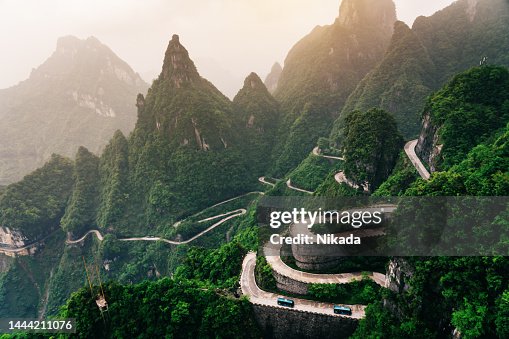
Huangcangyu National Forest Park.
Planning Your Visit: A Practical Guide
Your Practical Guide to Visiting Huangcangyu National Forest Park
Nestled in the enchanting Xiao County of Suzhou City, Anhui Province, Huangcangyu National Forest Park (皇藏峪国家森林公园) is a treasure trove of natural beauty and historical significance. From towering ancient trees to stunning landscapes, this park is a must-visit for international travelers seeking adventure and tranquility. Here’s a comprehensive guide to ensure your visit is both enjoyable and memorable.
Best Time to Visit
- Spring (March – May): Experience the park’s vibrant flora, as wildflowers bloom and the weather is pleasantly warm.
- Summer (June – August): While the temperatures can rise, the lush greenery provides ample shade for hiking and exploration.
- Autumn (September – November): Witness the breathtaking transformation of the landscape with fiery red and golden leaves, perfect for photography enthusiasts.
- Winter (December – February): Enjoy the serene beauty of snow-clad trees and peaceful surroundings, ideal for a quiet retreat.
Getting There
- By Air: The nearest major airport is Xuzhou Guanyin International Airport. From there, you can take a bus or taxi to reach the park.
- By Train: Suzhou Railway Station and Suzhou East Railway Station offer convenient access. Trains frequently run from major cities, making it easy to arrive.
- By Bus: Long-distance buses from various cities will take you directly to Suzhou. An intercity bus from Suzhou to Xuzhou will stop at Huangcangyu Scenic Area.
- By Car: If you prefer driving, the park is accessible with well-maintained roads leading from nearby urban areas.
Ticket Information
- Entry Fee: Approximately 47 RMB (around AUD 6.86) for adults. Discounts may be available for children or seniors, so check in advance.
Suggested Itinerary
- Duration: Plan for a visit of about 3-4 hours to fully appreciate the park’s attractions.
- Must-See Spots:
- Huangcang Cave: A fascinating cave that showcases the region’s geological wonders.
- Ruiyun Temple: A serene location offering a glimpse into the area’s spiritual heritage amid ancient trees.
- Bajian Spring: Don’t miss the refreshing springs that provide a delightful break from your explorations.
Accommodation
For a comfortable stay close to the park, consider these options:
- Suzhou International Hotel: Located near Suzhou Station, offering convenient access to transportation and shopping, along with modern amenities such as free parking and an indoor heated swimming pool.
- Xiao County Hotels: Various guesthouses and hotels in Xiao County provide a more local experience and reduce travel time to the park.
Culinary Delights
Indulge in local flavors with these must-try dishes near the park:
- Fuliji Roast Chicken: Known for its crispy skin and tender meat, this local specialty is a culinary highlight.
- Xiao County Mianpi: A delicious rice noodle dish served with bean sprouts and a variety of sauces.
- Huangcangyu Mushroom Chicken: Made with local wild mushrooms, this dish promises a rich and aromatic experience.
Tips for a Smooth Visit
- Dress Appropriately: Wear comfortable shoes for hiking and dress in layers, as temperatures can vary throughout the day.
- Stay Protected: In summer months, remember to apply sunscreen and insect repellent to avoid sunburn and mosquito bites.
- Check the Weather: Be sure to check local weather forecasts before your visit to prepare accordingly.
- Respect Nature: Follow park rules and guidelines to preserve the beauty of the park for future generations.
With its captivating scenery and rich cultural history, Huangcangyu National Forest Park offers an unforgettable escape into nature. Whether you’re hiking through ancient forests or soaking in the tranquility of its temples, this enchanting destination is sure to leave a lasting impression. Enjoy your adventure!
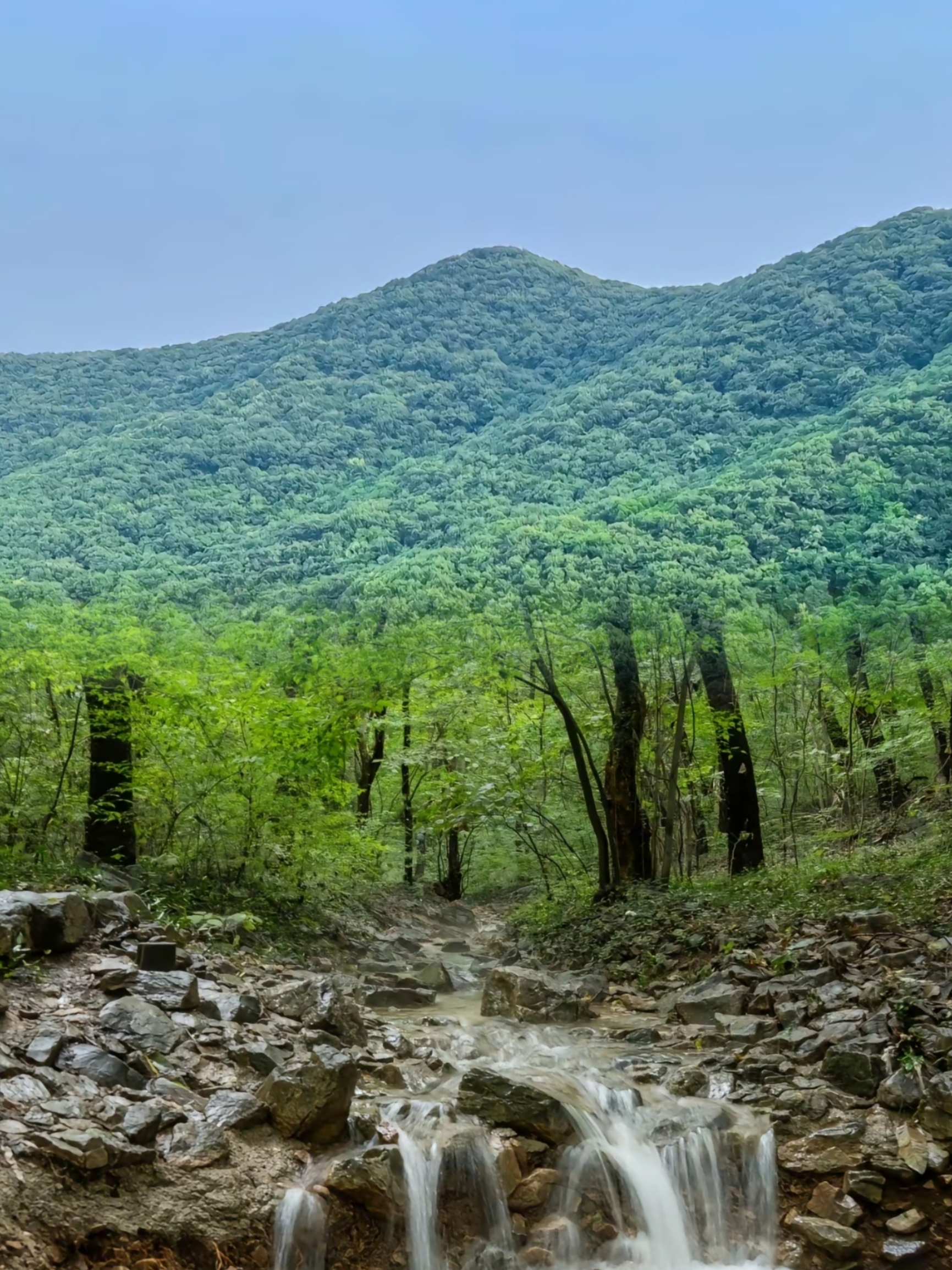
Huangcangyu National Forest Park.
Tickets: Prices, Booking, and Tips
When planning your visit to Huangcangyu National Forest Park, it’s essential to be informed about ticket prices, booking options, and a few helpful tips to enhance your experience.
Ticket Prices
Admission to Huangcangyu National Forest Park is quite affordable, typically priced around ¥47 (approximately AUD 6.86 or USD 3.00). This modest fee grants you access to the park’s stunning natural landscapes, ancient trees, and a plethora of scenic spots.
Booking Information
Tickets can be purchased on-site at the park entrance, but to ensure a smooth visit, consider booking in advance through popular travel platforms. Websites like Trip.com often provide options for securing your tickets ahead of time, which can save you from potential lines during peak seasons.
Tips for Your Visit
-
Best Time to Visit: To fully appreciate the diverse beauty of the park, consider visiting in spring (March to May) when flowers bloom, or in autumn (September to November) when the foliage turns vibrant shades of red and gold.
-
Duration: Plan to spend 3-4 hours exploring the park. This will allow you to enjoy its major attractions, including the Ruiyun Temple and the breathtaking views from various vantage points.
-
Transportation: If you’re traveling from Suzhou, the intercity bus from Suzhou to Xuzhou stops at Huangcangyu Scenic Area, making it a convenient option for visitors.
-
What to Bring: Be sure to carry essentials such as water, sun protection, and insect repellent, especially during the summer months when the sun is blazing and mosquitoes are more active.
-
Local Cuisine: After your adventure, indulge in some local delicacies like Fuliji Roast Chicken or Xiao County Mutton Soup to experience the area’s rich culinary offerings.
By keeping these details in mind, you’re all set for a memorable journey through Huangcangyu National Forest Park, where nature’s beauty and historical significance come together seamlessly. Enjoy your trip!
How to Get There: A Complete Transportation Guide
Getting to Huangcangyu National Forest Park is a delightful journey that sets the stage for your exploration of this natural wonder. Whether you’re traveling from nearby cities or venturing from further afield, the park is accessible through various transportation options that cater to international travelers.
By Air
The nearest major airport is Xuzhou Guanyin International Airport (XUZ), located approximately 70 kilometers from Huangcangyu National Forest Park. From the airport, you can take an airport shuttle or a taxi to Suzhou City, which is about a 1.5-hour drive from the airport.
By Train
If you prefer train travel, Suzhou Railway Station and Suzhou East Railway Station are your best options. Both stations are well-connected to major cities across China. From Suzhou, it’s a convenient journey to reach the park:
- From Suzhou Railway Station: Take a taxi to the intercity bus terminal or opt for a local bus to the scenic area.
- From Suzhou East Railway Station: This station has more frequent services, making it an excellent choice if you’re coming from a nearby city.
By Bus
Intercity bus services operate regularly from Suzhou Bus Station to Huangcangyu National Forest Park. Look for buses labeled for the Huangcangyu Scenic Area, which typically run every hour. The journey takes about 1-2 hours, depending on traffic conditions. This option is budget-friendly and provides a local travel experience.
By Car
For those who prefer driving, renting a car is a great way to explore the Anhui province at your own pace. The park is roughly a 1-hour drive from Suzhou City and can be reached via G3 Beijing-Hangzhou Expressway or S102 Provincial Road. The roads are generally well-maintained, and having a personal vehicle allows you the flexibility to stop at scenic viewpoints along the way.
Local Transportation
Once you arrive at Huangcangyu National Forest Park, the area is best explored on foot. There are well-marked trails and paths leading to various attractions, such as the Huangcang Cave and Tianmen Temple. Make sure to wear comfortable shoes and carry plenty of water.
Travel Tips
- Plan Ahead: Check bus and train schedules in advance, especially during peak travel seasons.
- Language: While many signs are bilingual, having a translation app or a phrasebook can be helpful.
- Cash: Bring some cash, as not all local vendors may accept credit cards.
Embarking on your journey to Huangcangyu National Forest Park promises to be an adventure in itself, leading you through the stunning landscapes that await. Enjoy the ride!
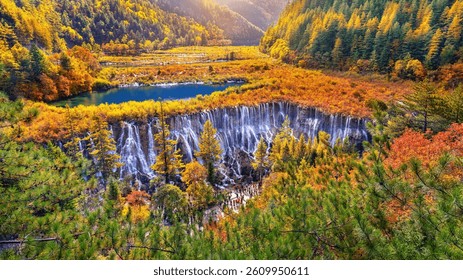
Huangcangyu National Forest Park.
Local Cuisine and Accommodation Nearby
Nestled in the lush landscapes of Huangcangyu National Forest Park, a culinary adventure awaits international travelers eager to explore the local flavors of Anhui Province. As you unwind in the park’s natural beauty, don’t miss the opportunity to savor some delightful regional dishes that reflect the area’s rich culinary heritage.
Local Cuisine
-
Fuliji Roast Chicken
This dish is a must-try when visiting the region. Local chicken is marinated in a secret blend of spices and then slowly stewed, resulting in a dish with crispy skin and tender, juicy meat. It’s particularly famous for its bright red color and rich flavor, making it a favorite among both locals and visitors. -
Xiao County Mianpi
A beloved local specialty, Mianpi is made from rice that undergoes a meticulous process of soaking, grinding, and steaming. Served with fresh bean sprouts and drizzled with sesame and chili sauces, this dish offers a delightful mix of textures and flavors, perfect for a light yet satisfying meal. -
Sixian Tofu Brain
Known for its delicate texture, this dish features tofu that is carefully cooked over low heat to preserve its creamy consistency. Served hot, it’s often enjoyed with a sprinkle of soy sauce or a touch of chili oil, providing a comforting and flavorful experience. -
Xiao County Mutton Soup
Ideal for warming up on cooler days, this hearty soup is made from high-quality local goats. With tender, flavorful meat and a rich broth, it’s often paired with water chestnut sesame cakes for a delicious and filling meal.
Accommodation Nearby
To complement your culinary experiences, consider staying at the Suzhou International Hotel, conveniently located near the park. Here’s why it’s a great choice:
- Accessibility: Located close to Suzhou Station and Suning Plaza, it offers easy access to transportation and shopping.
- Serene Environment: The hotel boasts a tranquil atmosphere with well-insulated rooms, allowing you to relax after a day of exploration.
- Modern Amenities: Enjoy features such as charging stations, free parking, and even robot service to enhance your stay. The indoor heated swimming pool provides an extra touch of luxury, perfect for unwinding after a day of hiking.
For those seeking a more local experience, consider accommodations in Xiao County. This area not only places you within close proximity to Huangcangyu National Forest Park but also allows you to immerse yourself in the local culture and hospitality.
Conclusion
Whether you’re indulging in the rich flavors of Anhui cuisine or enjoying the comfort of well-appointed accommodations, your visit to Huangcangyu National Forest Park promises to be a memorable experience. With its stunning natural landscapes and vibrant local culture, it’s an ideal destination for travelers looking to explore the heart of China’s culinary and natural treasures.
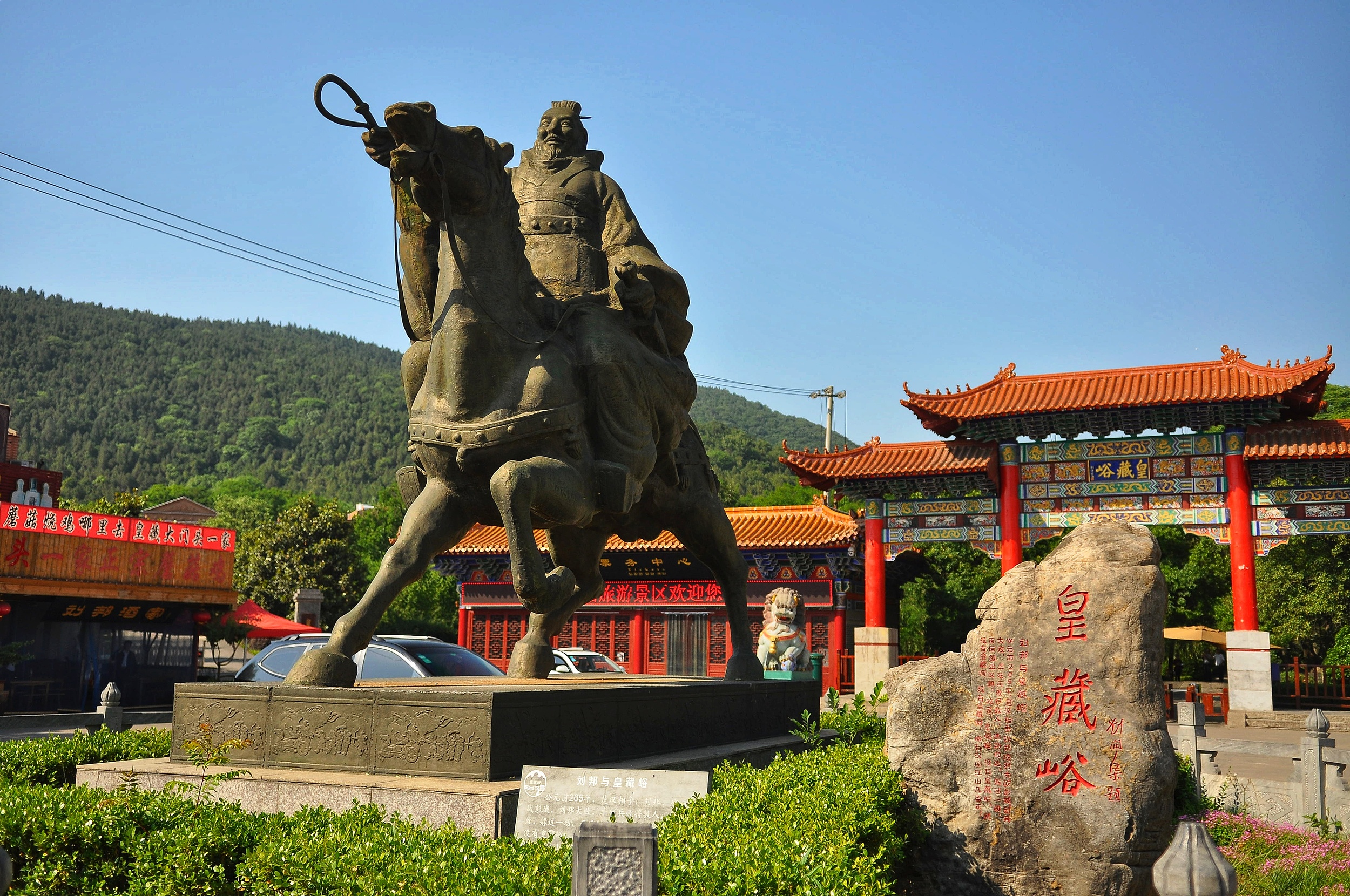
Huangcangyu National Forest Park.
Frequently Asked Questions
Frequently Asked Questions about Huangcangyu National Forest Park
-
What are the opening hours of Huangcangyu National Forest Park?
The park is typically open from 8:00 AM to 5:30 PM. However, it’s always a good idea to check the official website or local sources for any seasonal changes in hours. -
How much does it cost to enter the park?
The entrance fee is approximately 47 yuan (around AUD 6.86). This fee grants you access to the park’s numerous scenic spots and hiking trails. -
What is the recommended time to visit Huangcangyu National Forest Park?
A visit usually takes about 3 to 4 hours. This allows ample time to explore the main attractions, such as Huangcang Cave and the beautiful temples within the park. -
What is the best time of year to visit the park?
Spring (March to May) and autumn (September to November) are considered the best times to visit due to pleasant weather and stunning seasonal scenery. In spring, you’ll see blooming flowers, while autumn offers vibrant foliage. -
Is the park suitable for families and children?
Yes, Huangcangyu National Forest Park is family-friendly, with plenty of open spaces and easy walking trails suitable for children. The natural scenery is engaging for all ages! -
What should I wear or bring for a day at the park?
Comfortable walking shoes are a must, as the terrain may include uneven paths. Dress in layers, as temperatures can vary throughout the day, and don’t forget sun protection and insect repellent, especially in summer. -
Are there any food options available inside the park?
While there may be small vendors, it’s advisable to bring snacks and water for your visit. For a full meal, consider dining in nearby Suzhou or Xiao County before or after your visit. -
How can I get to Huangcangyu National Forest Park from Suzhou?
You can take an intercity bus from Suzhou to Xuzhou, which stops at the Huangcangyu Scenic Area. It’s a convenient option for accessing the park without needing a car.
Final Thoughts on Your Trip
As you wrap up your journey through Huangcangyu National Forest Park, take a moment to reflect on the breathtaking beauty and rich history that surrounds you. This tranquil haven, steeped in legends and adorned with ancient trees, offers a rare glimpse into both nature’s artistry and the cultural tapestry of China. From the serene paths leading to Ruiyun Temple to the enchanting vistas of fiery autumn foliage, every corner of the park invites exploration and contemplation.
Whether you’re scaling the heights of its rocky terrains or savoring the local culinary delights, the park promises an experience that resonates with both adventure and serenity. Remember to carry the memories of the vibrant landscapes, the peaceful moments spent in the embrace of nature, and the stories whispered by the winds through the ancient trees.
As you leave, may the spirit of Huangcangyu accompany you, inspiring your future travels and enriching your appreciation for the world’s natural wonders. Safe travels, and may your journeys ahead be filled with discovery and joy!